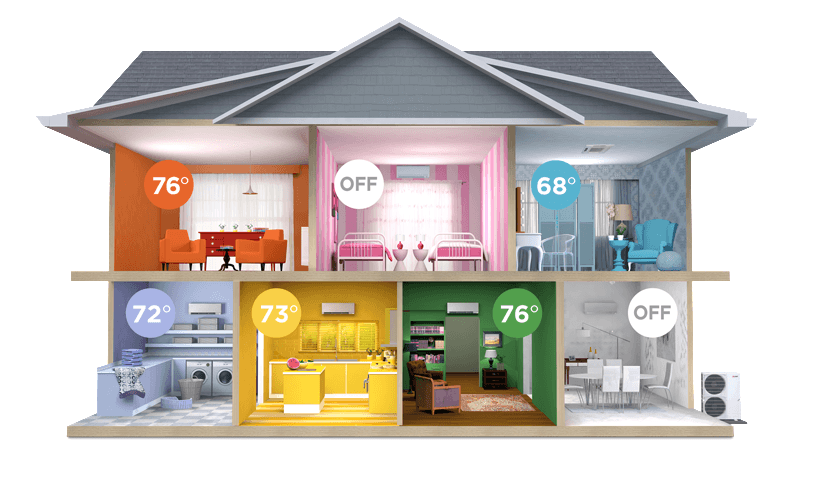Can A Ductless Mini Split Be Used For Heating?
In a word- Yes. Many people assume that ductless mini-split systems are great air conditioners, but did you know they can be great heaters as well? We have installed many mini splits in the Abingdon, VA area, and the surrounding neighborhoods. One of the things homeowners enjoy so much is the versatility of their mini splits, being able to use them all year long!
Understanding A Ductless Mini-split System
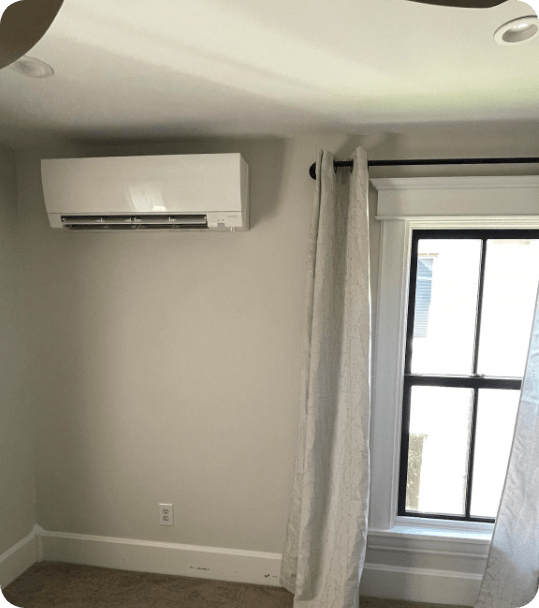 A ductless mini-split system is a heat pump. It consists of two main units, an indoor air handler, often called a head or cassette, and an outdoor compressor unit, which connects via lines to the indoor air handler. These are like the components of a traditional HVAC system, but they are smaller and can be placed at a distance from one another, unlike a traditional unitary system.
A ductless mini-split system is a heat pump. It consists of two main units, an indoor air handler, often called a head or cassette, and an outdoor compressor unit, which connects via lines to the indoor air handler. These are like the components of a traditional HVAC system, but they are smaller and can be placed at a distance from one another, unlike a traditional unitary system.
As heat pumps, these systems can both heat and cool your space- it’s all about the direction you want the heat to go! Mini-split systems tend to work well down to about 0oF, so if you live where it gets down below that temperature regularly, you may need a back-up heating system. However here in the Chilhowie area, our average lows, even in the middle of January, are in the 20’s, making a mini-split ductless heat pump system a great way to heat and cool your whole home for year- round comfort.
How Do Ductless Mini Splits Heat My Home?
During heating, the system works by:
- Extracting heat from outside air (even when it’s cold) and moving it indoors.
- The outdoor unit absorbs heat from the air and transfers it to the refrigerant.
- The refrigerant is then compressed to raise its temperature and pumped to the indoor unit(s), where the heat is released into the room.
In the Summer, this process just works in reverse, where the heat is extracted from the indoor air and pumped outside, cooling your home!
Mini Split heat pumps are about 70% more efficient than baseboard heaters and they distribute the warm air evenly throughout your space, making them a much better way to stay comfortable while keeping your energy bills low all winter.
Things to Know If you want to use a Mini-Split System for Heating
- Choose the Right Capacity:
- The mini-split system must be properly sized for your space. A system too small will struggle to heat the room, and one that’s too big will cycle on and off frequently, giving you less efficiency.
- Consult with an HVAC professional, like our team here at Complete Comfort to determine the right capacity based on the square footage and insulation level of your home.
- Set the Thermostat to Heating Mode:
- Most mini-split systems have a remote control or wall-mounted thermostat. Switch the system to heating mode.
- Set the desired temperature for each zone (room).
- Ensure Proper Placement of Indoor Units:
- Place the indoor air handlers where they can distribute warm air evenly. Avoid positioning them near windows or in places where airflow might be obstructed.
- Monitor for Cold Weather Performance:
- Mini-split systems can work in temperatures as low as 0°F (-18°C) or even lower with cold-climate heat pump models. Make sure when you purchase your system you know whether it can handle the extreme temperatures of your area. Here in Virginia, we don’t often need the cold-climate units, but they are available.
- Maintain the System Regularly:
- Clean or replace filters in the indoor units regularly to ensure efficient operation.
- Make sure the outdoor compressor is clear of snow, debris, and ice during winter, as these can obstruct airflow and reduce efficiency.
- Use Ceiling Fans for Heat Distribution:
- To help distribute the warm air, you can use ceiling fans set to rotate clockwise at a low speed. This pushes the warm air near the ceiling back down into the room.
Advantages of Using a Mini-Split for Heating
Here at Complete Comfort, we’re seeing more and more customers choose ductless mini-split systems because:
- Energy Efficiency: Mini-splits are generally more energy-efficient than traditional heating systems because they don’t lose heat through ductwork. Increased efficiency means getting the comfort you want, without increasing your energy bills!
- Zoning Flexibility: You can control the temperature of individual rooms independently. Each individual indoor air handler unit can be controlled independently, meaning you can adjust the comfort level in the family room while letting someone else adjust the temperature in another room, or even shut the system off in say, a bedroom, while no one is there. This zoning helps you heat and cool the areas you’re using, and not waste energy in spaces that you’re not.
- No Need for Ductwork: Ductless mini-split systems are ideal for homes without existing ductwork, or to heat specific rooms that can be difficult to heat and cool, like additions, basements, sunrooms, garages, third floors, and the like.
Mini-split systems can be terrific as supplemental heating and cooling for your home, or as a whole home heating and cooling solution. A single outdoor unit can power up to 8 indoor air handlers, delivering custom comfort to each room, every day of the year.
If you’re interested in learning more about whether a ductless mini-split system could be the comfort solution you’ve been looking for, give us a call here at Complete Comfort. We’ll help do a Load Calculation and help you decide on what type of system will keep your family comfortable all year long. We want to keep you in Complete Comfort, and make sure you enjoy energy-efficient comfort all year long.


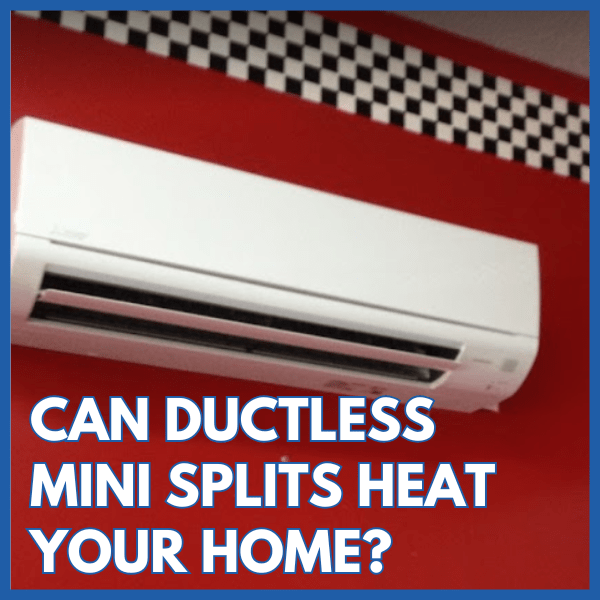

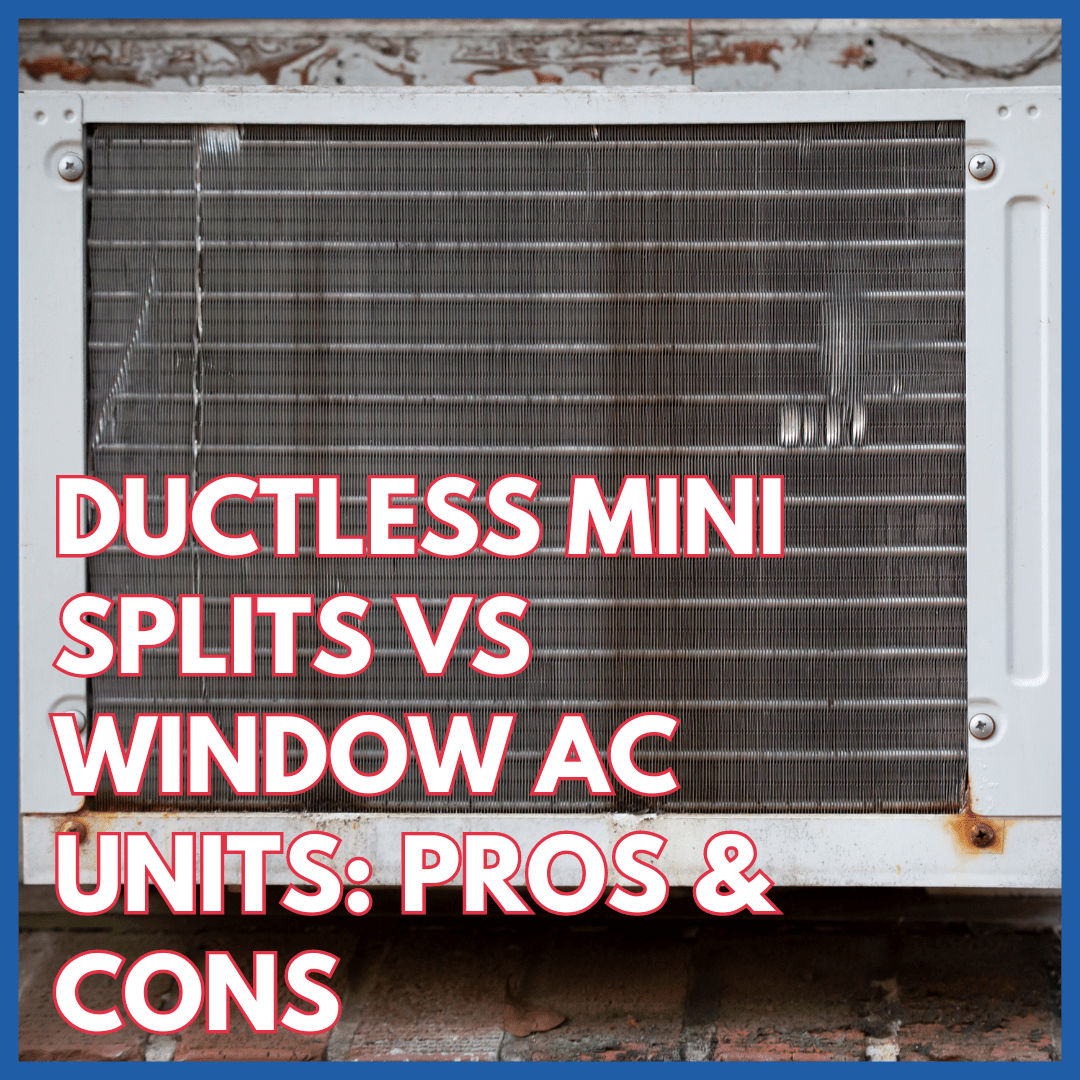
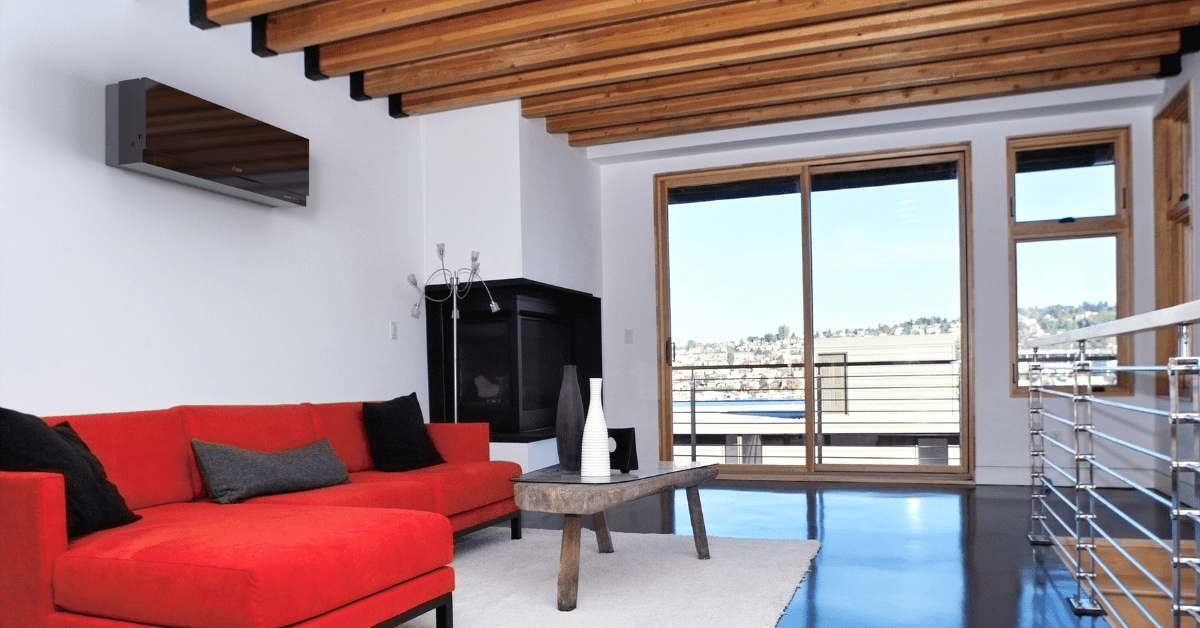 There are several different options to choose from when cooling your home. In lots of cases, people go with a central air conditioning system. In this article we will be talking about window AC units vs ductless mini splits. Both options can cool your space off, but there are pros and cons for each system.
There are several different options to choose from when cooling your home. In lots of cases, people go with a central air conditioning system. In this article we will be talking about window AC units vs ductless mini splits. Both options can cool your space off, but there are pros and cons for each system.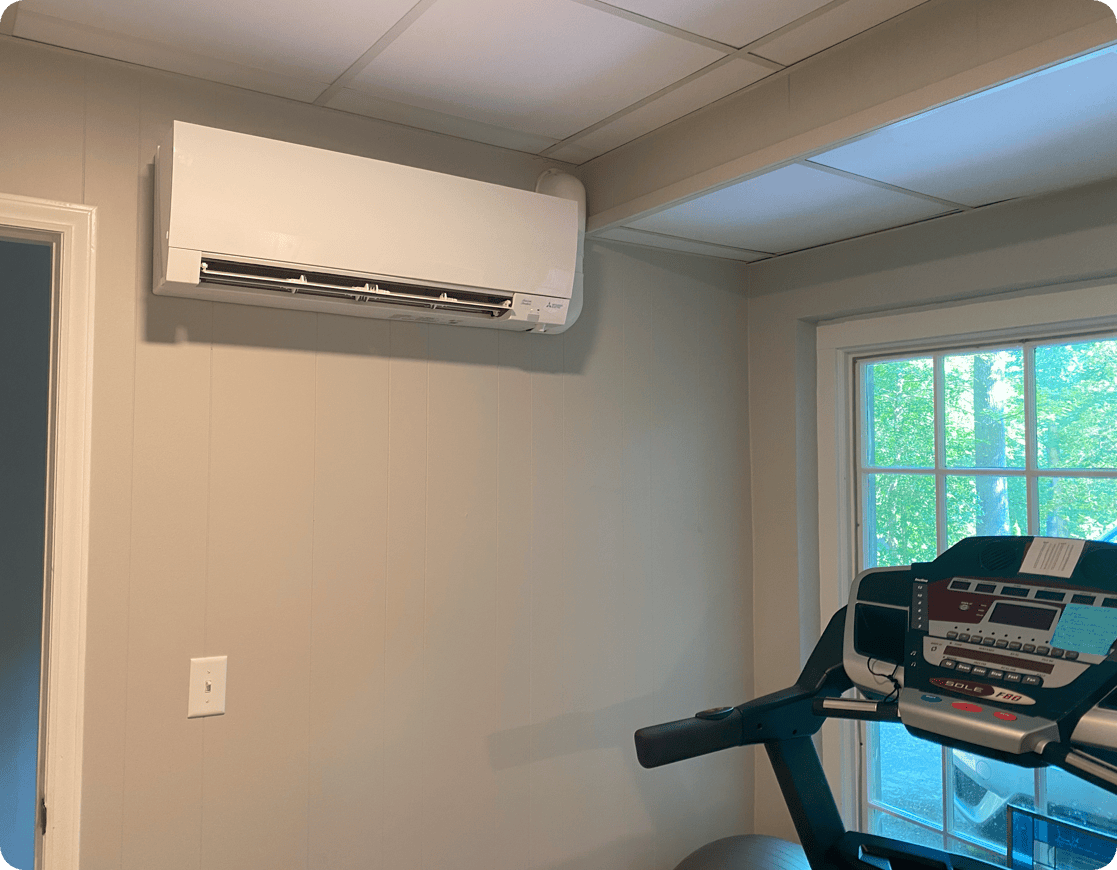 Ductless mini splits have the ability to cool the home off, but unlike window AC units, they can also be used to provide heating. In the summer ductless AC is wonderful, but it’s so nice to be able to use these same units to heat in the winter. Ductless mini splits are heat pumps, and just like heat pumps can keep you comfortable all year round, ductless mini splits do the same. Instead of using different HVAC solutions for heating and cooling, a ductless mini split is versatile enough to do both!
Ductless mini splits have the ability to cool the home off, but unlike window AC units, they can also be used to provide heating. In the summer ductless AC is wonderful, but it’s so nice to be able to use these same units to heat in the winter. Ductless mini splits are heat pumps, and just like heat pumps can keep you comfortable all year round, ductless mini splits do the same. Instead of using different HVAC solutions for heating and cooling, a ductless mini split is versatile enough to do both!
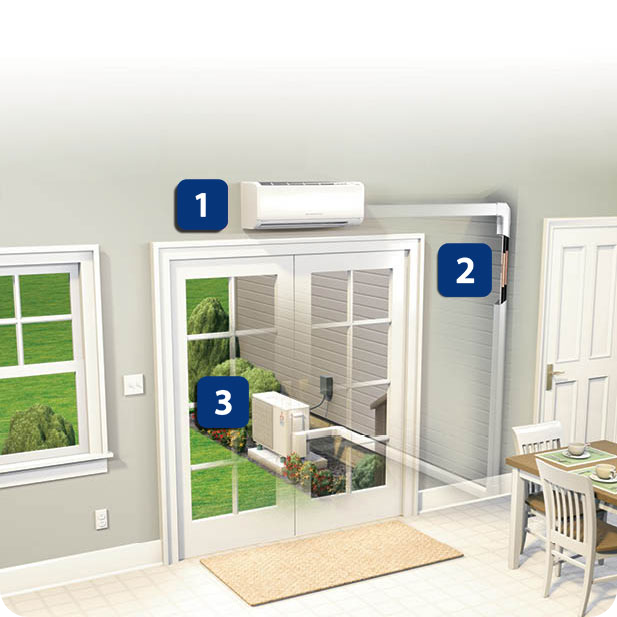 This unit disperses the heated or cooled air into the designated zones controlled by a thermostat. The conduits that carry the refrigerant lines, power cable, suction tubing, and condensate drain are hidden in some line set that runs along the wall, offering an aesthetically pleasing solution compared to traditional duct systems.
This unit disperses the heated or cooled air into the designated zones controlled by a thermostat. The conduits that carry the refrigerant lines, power cable, suction tubing, and condensate drain are hidden in some line set that runs along the wall, offering an aesthetically pleasing solution compared to traditional duct systems.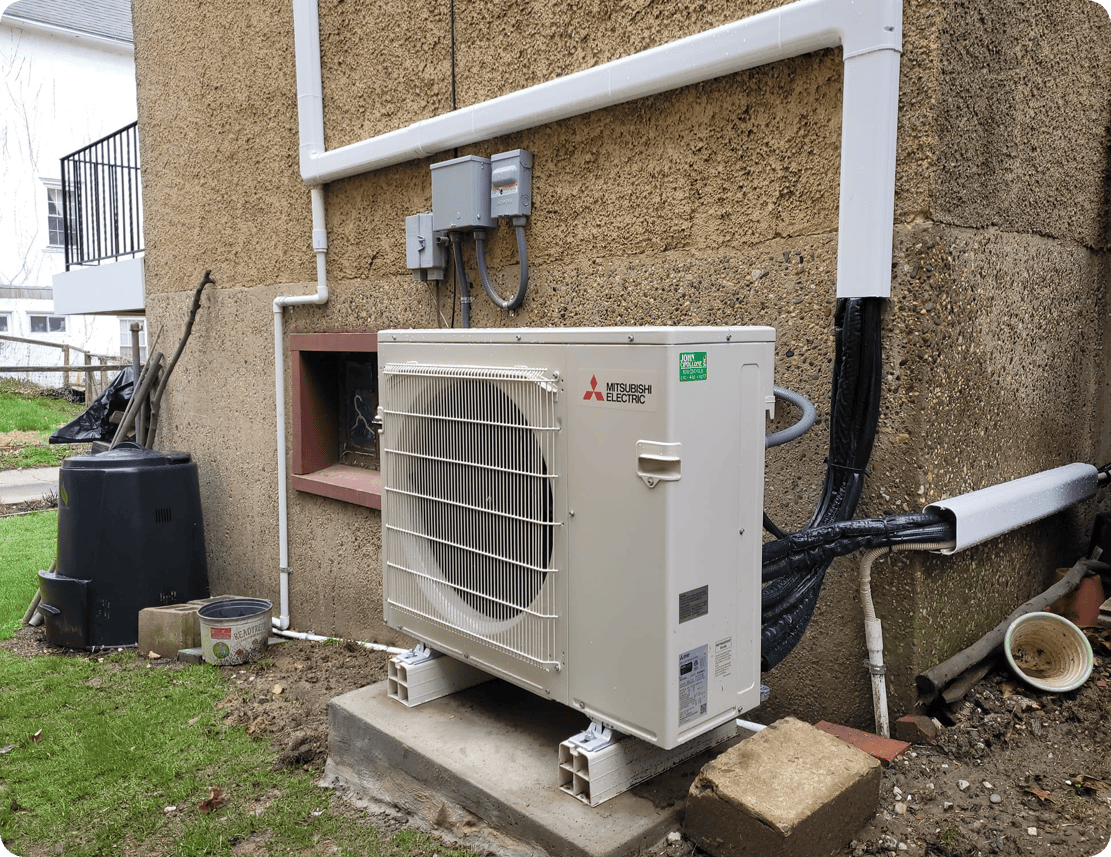 The heat pump, also known as the condenser unit, is the outdoor unit of the mini split system. It’s the system’s engine, controlling the refrigerant flow to the indoor units. This is the component that takes in the air from the outside, and extracts the heat. It also dispells hot air in the summer.
The heat pump, also known as the condenser unit, is the outdoor unit of the mini split system. It’s the system’s engine, controlling the refrigerant flow to the indoor units. This is the component that takes in the air from the outside, and extracts the heat. It also dispells hot air in the summer.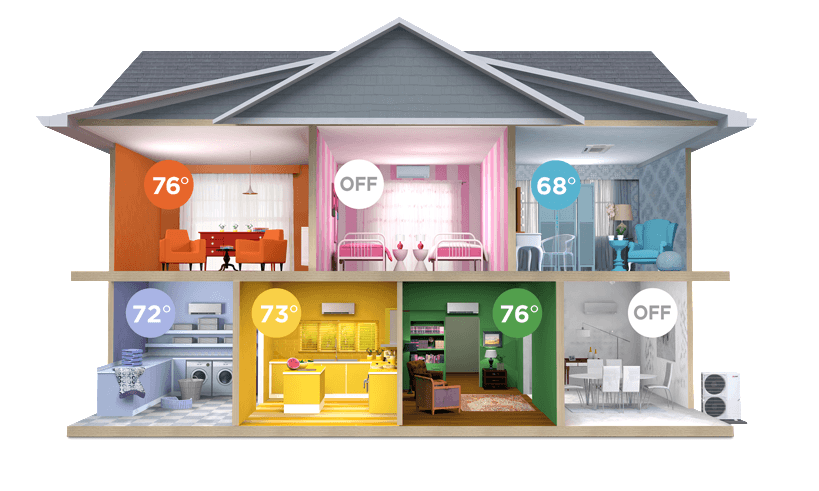
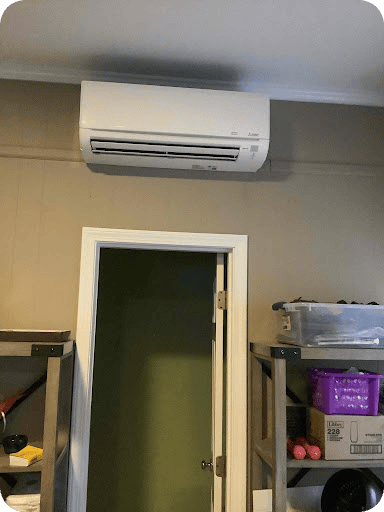 Before your mini split installation, be prepared to ask your HVAC company various questions. Topics should include costs, permits, warranties, and other relevant considerations.
Before your mini split installation, be prepared to ask your HVAC company various questions. Topics should include costs, permits, warranties, and other relevant considerations.
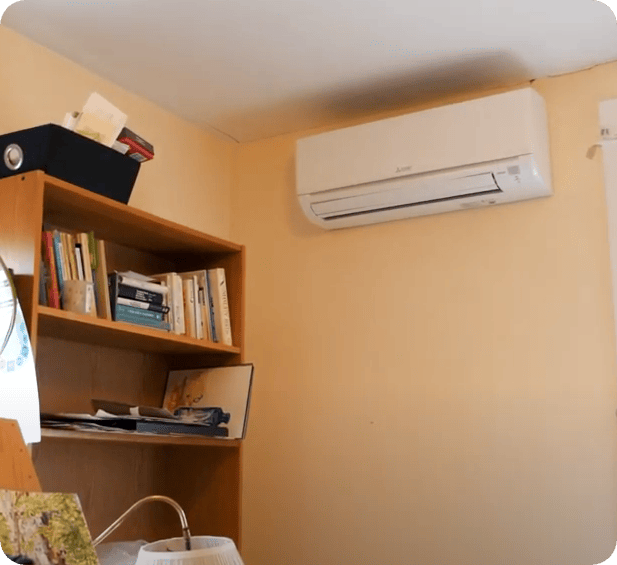 For years central heating and cooling was considered the best way to heat and cool your home. Now, ductless mini splits are becoming an increasingly popular choice for homeowners, offering a slew of benefits that traditional heating and cooling systems simply can’t match. Here are five key advantages of ductless mini splits:
For years central heating and cooling was considered the best way to heat and cool your home. Now, ductless mini splits are becoming an increasingly popular choice for homeowners, offering a slew of benefits that traditional heating and cooling systems simply can’t match. Here are five key advantages of ductless mini splits: 